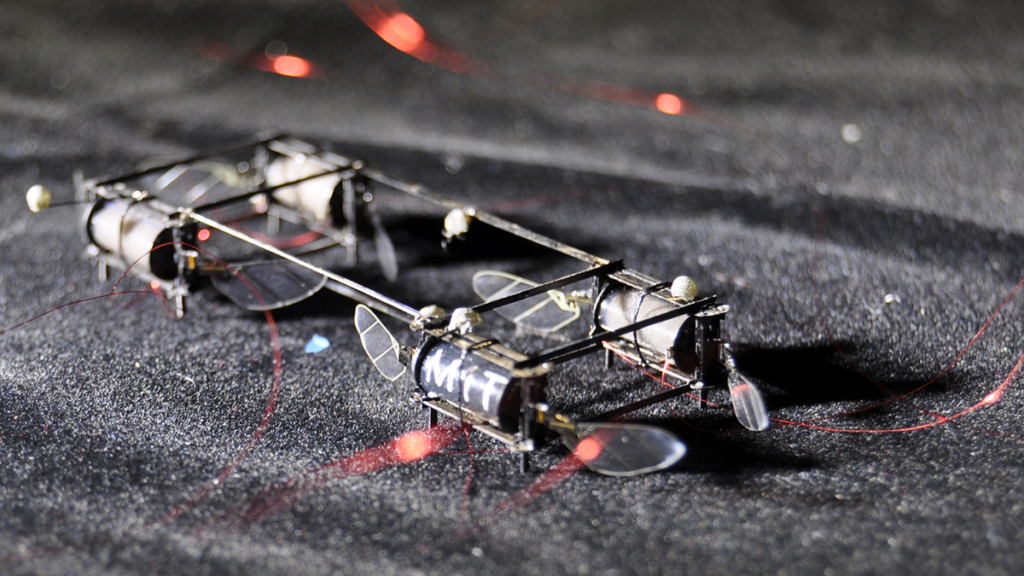MIT has announced its flying robots that use a phenomenon known as electroluminescence to replace the problematic need for weighty sensors with a light signal-based system of communication that can be carried out between other firefly-inspired robots.
Fireflies that light up dusky backyards on warm summer evenings use their luminescence for communication – to attract a mate, ward off predators, or lure prey. These glimmering bugs form the spark of inspiration that have led to this innovation from the MIT scientists. Taking a cue from nature, they built electroluminescent soft artificial muscles for flying, insect-scale robots. The tiny artificial muscles that control the robots’ wings emit coloured light during flight.
This electroluminescence could enable the robots to communicate with each other. If sent on a search-and-rescue mission into a collapsed building, for instance, a robot that finds survivors could use lights to signal others and call for help.
The ability to emit light also brings these microscale robots, which weigh barely more than a paper clip, one step closer to flying on their own outside the lab. These robots are so lightweight that they can’t carry sensors, so researchers must track them using bulky infrared cameras that don’t work well outdoors. Now, they’ve shown that they can track the robots precisely using the light they emit – along with just three smartphone cameras.
As the senior author of the paper, Kevin Chen, Head of the Soft and Micro Robotics Laboratory in the Research Laboratory of Electronics, explains: “If you think of large-scale robots, they can communicate using a lot of different tools: Bluetooth, wireless – all those sorts of things.
“But for a tiny, power-constrained robot, we are forced to think about new modes of communication. This is a major step toward flying these robots in outdoor environments where we don’t have a well-tuned, state-of-the-art motion tracking system.”
Chen and his collaborators accomplished this by embedding miniscule electroluminescent particles into the artificial muscles. The process adds just 2.5 percent more weight without impacting the flight performance of the robot.
Joining Chen on the paper are EECS graduate students Suhan Kim, the lead author, and Yi-Hsuan Hsiao; Yu Fan Chen SM ’14, PhD ’17; and Jie Mao, an associate professor at Ningxia University. The research was published this month in IEEE Robotics and Automation Letters: more information can be found at MIT’s news page.
